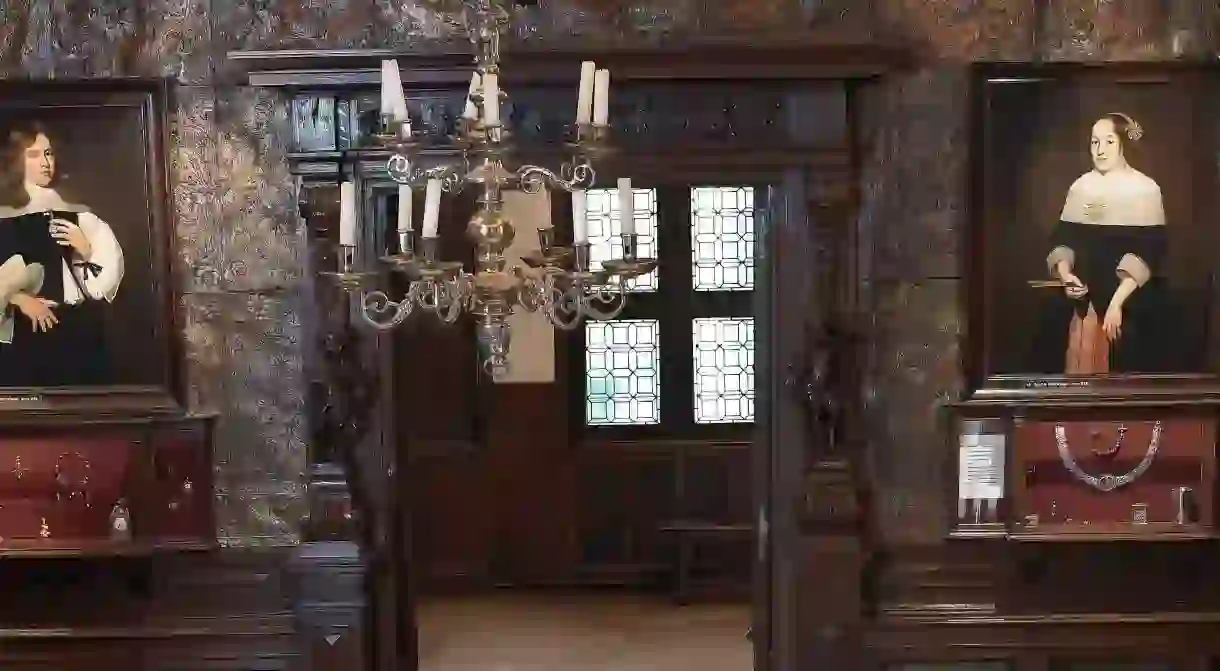Wonderful Historic House Museums In Belgium

House museums often provide one of those intimate, off-the-beaten-track experiences that you can’t always get at bigger venues. This rings especially true for these six historic gems in Belgium that not only tell the stories of the artwork they house but also of the art-loving humans and artists who once called these places home.
Talbot House
Hotel

A Belgian beacon of moral and solidarity during troubled times, Talbot House was a haven for Allied soldiers in the First World War. With Poperinge as the closest unoccupied city to the Ypres Salient, British chaplains Neville Talbot and Philip ‘Tubby’ Clayton chose this city to open an ‘Every Man Club,’ where military folk of all ranks could come together in a homey atmosphere as an alternative to the brothels and questionable venues that had earned Poperinge the nickname ‘Little Paris.’ Now a museum that highlights what life was like behind the front lines, the former concert hall and club is still full of plaques carrying messages such as ‘All rank abandon ye who enter here,’ and ‘To pessimists, way out!’
Rubenshuis
Museum

Peter Paul Rubens, Old Master extraordinaire, spent 25 years of his life in this 17th-century villa in the center of Antwerp. A fine example of the Renaissance ideal homo universalis, Rubens was not only a painter of monumental religious works but a diplomat, scientist, and architect as well. It is this jack-of-all-trades aspect of the artist’s life that’s explored in this house museum Rubens himself designed in the flamboyant Italian style. Parts of the tour include the Baroque courtyard and the adjacent studio, also of his hand, where he and his droves of pupils produced his now seminal works.
Van Buuren Museum
Museum

In a labor of love, David and Alice Van Buuren spent three decades of the former century perfecting their Art Deco home in Uccle. The art-loving patrons enlisted the help of the foremost Belgian, Dutch, and French designers of the day – some of whom were close acquaintances – to fill their villa with precious stained-glass windows, bright-colored carpets and custom furniture. It’s easy to imagine artistic notables such as René Magritte and Erik Satie (whose rosewood piano dominates the music room) visiting here, as they often did. Taking into account that Brussels’ ultimate 20th-century Maecenas couple also left a painting collection that includes names like Van Gogh, Bruegel, and Ensor, the world is lucky to have been granted access to their ‘living academy’ since 1975.
The Magritte House Museum
Museum

From the Van Buuren home where he was a welcome guest to René Magritte’s own Brussels abode. Belgium’s premier surrealist painter lived and worked for 24 years in the tranquil commune of Jette, slightly removed from the hustle and bustle of big city life. It’s in this intimate home museum where you can go after visiting the Magritte Museum in the center to get a feel for the man behind the challenging, oftentimes wacky artwork. Downstairs, a recreation of the Magritte household displays original furniture and personal belongings, complete with a signature bowler hat on the coat rack and a fluffy white dog on his and wife Georgette’s bed. Upstairs, letters and pictures tell Magritte’s biographical story alongside early paintings that display his fascination with different artistic movements.
Horta Museum
Museum, Architectural Landmark

Brussels most famed architect, Victor Horta has left Art Nouveau treasures dotted all over Brussels, such as his four ‘Major Townhouses’ that have earned a spot on the UNESCO World Heritage list. Among them is his own family home and atelier, which still breathes the pioneer’s style down to the smallest details. Its open plan layout, generally curved shapes, colorful mosaics, flowery motifs and grand spiral staircase have been completely restored and can be admired today, along with regular temporary exhibitions that are carefully curated to connect to Horta and his legacy.
Museum Mayer van den Bergh
Museum

The impressive collection now gathered at the Museum Mayer van den Bergh is the result of the vision of one rich collector who died young at 43 while horseback riding. By the end of his life at the turn of the 20th century, Fritz Mayer van den Bergh had become a respected connoisseur, known for his Breugel fascination and eye for unknown artists whose works would become popular only later. He died before he could realize his wish of opening his own museum – for which he’d already purchased mantelpieces and furniture – but his mother, Henriëtte van den Bergh, paid homage to her son by having a patrician townhouse built right next to the family’s residence in Antwerp. Over a century later, the museum that opened its doors in 1904 is still open for one and all to view its masterpieces, including Breugel the Elder’s Dulle Griet.













